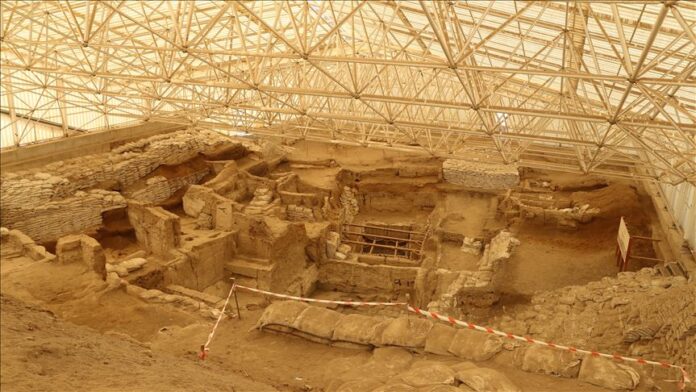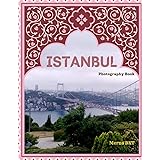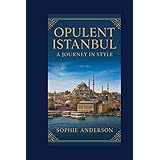by Adil Hacıömeroğlu
I described our trip to Çatalhöyük in the previous article. In this article, I will talk a little about Çatalhöyük.
Çatalhöyük is a settlement dating back about nine thousand years. An indispensable place to learn about the beginning and development of human history. It is one of the first lands where agriculture started in the world. People can start agriculture only when they start a settled life. This is after the discovery of fire.
There are two excavation sites at Çatalhöyük, the eastern and western mounds. The settlement in the east became a settlement in the Neolithic Age, and the settlement in the west in the Chalcolithic Age. Excavations and researches continue. There are two thousand years of uninterrupted settlement here. This period may seem short to many people; however, when we compare it with today’s settlements, it becomes clear how long this period is.
It is thought that approximately eight thousand people live in Çatalhöyük. Considering the size of that era and the number of people in the world at that time, this place can be considered a crowded city. The existence of such a central city strengthens the possibility of many villages in the vicinity.
The houses are built next to each other. Therefore, the walls separating the houses are common. There are gaps in the form of streets between some houses. These places were generally used as garbage areas. I think that the stools were also made here. The entrances to the houses are through the roof. You can go up to the roof with an unstable ladder and enter the house with another ladder from there. When you get to the roof, the ladder is pulled up. Thus, precautions are taken for both life and property safety. Looking at the examples of houses with interior and exterior features, the most important place in the house is the cellar. From this, it is understood that the people of that period were saving food for the winter in the barns of their homes. There are rectangular or square shaped doors that provide passage between the sections of the houses. If we say a door, it opens, not the kind that closes. There are only cavities that allow human passages.
Domestic animals (especially sheep) are taken to the roof at night. Sheep, which is an important source of income for the house, will be safe there. It is the way to protect them from both thieves and predators.
The average standing time of houses is about eighty years. It is interesting that houses have a longer lifespan when looking at today. There is neither iron nor cement in these structures. The adobe houses are challenging the years. So there was no cheating or scrap in the construction of houses at that time!
The new houses were built on top of the demolished ones with the same plan. In this way, new lands were not opened and agricultural areas were not occupied by structures. In addition, the texture of the settlement is thus preserved. Eighteen neolithic settlement layers, which were determined to exist between 7400 BC and 6200 BC, were unearthed at the end of the excavations in the eastern settlement. The pottery found in the excavations made here provide us with information about the life of that day. The interior and exterior walls, ceiling and floor of the residences are white.
The hearth and oval-shaped ovens in the house are usually built on the south walls of the buildings. Since there was an oven, it means that those who lived in this period knew how to make bread. This is an important indicator of civilization.
Obsidian mirrors, mace heads, stone beads, saddle-shaped hand mills, grinding stones, pestles, burners, stone rings, bracelets, hand axes, chisels, oval glasses, deep spoons, ladles, needles, polished bone belt, many small finds such as fasteners and bone tools were found. We understand from these that people of this period know how to sew, even if it is simple. In addition, some craftsmanship tools are interesting. The most interesting thing is that the women of that period were also adorned within the framework of their possibilities, as they are today. This means that in every period of history, women strive to look beautiful.
Çatalhöyük took us on an extraordinary historical journey. Neither the extreme heat nor the occasional dust cloud did not affect our civilizational journey. We leave this civilization center with our feet backwards, promising to come back from within.
When we arrive in Çumra, I look more carefully at the single-storey mud brick houses. Apart from a few changes, how very similar their residences in Çatalhöyük are. The building materials are more or less the same. There is not much difference in the way they are made!
When I took the bus from Çumra and returned to Konya and when I laid my head on the pillow that night, the village houses that I had visited for a long time from the Inner Aegean to Eastern Anatolia passed before my eyes like a film strip. The mud-brick houses with earthen roofs, where I had the opportunity to sleep in my childhood, came to life in my memory. How are these different from Çatalhöyük houses? Aren’t the mud-brick houses left alone in the side streets of Konya, the arms of the Çatalhöyük civilization reaching our days?
Çatalhöyük is an important center of civilization. It is an important center of agricultural civilization and human settlement. It is a place that everyone should visit and see. Especially the history lessons of the students should be explained here so that the information becomes concrete.
Anatolia is a very important place where thousands of years of civilization and people with different lifestyles live. Let’s know more about the value of the land we live on. Let’s know that we will call these lands our homeland forever. Let’s preserve this wealth so that the civilization sun of Anatolia will illuminate the whole world and show the way forever.
Adil Haciomeroglu






















